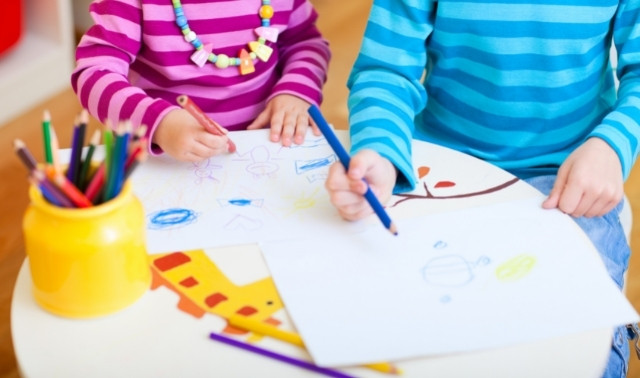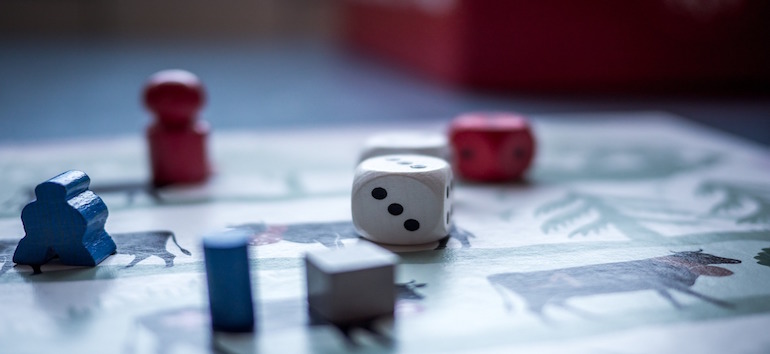Sign up for the Family Tree Newsletter Plus, you’ll receive our 10 Essential Genealogy Research Forms PDF as a special thank you!
Get Your Free Genealogy Forms
"*" indicates required fields
When kids are ready to turn genealogy into a hobby of their own, prepare to take a different approach than you’re used to. Choose age-appropriate activities, advises Maureen Taylor, author of Through the Eyes of Your Ancestors (Houghton Mifflin), a genealogy guide for kids. And keep in mind that many kids aren’t interested in the details. “Don’t overwhelm them with full names, dates and place of birth,” she says. “Lure them in by taking advantage of their natural curiosity. For instance, show them photographs or teach them games from your youth. If children think that family history is fun, they will be happy to learn more in small pieces.”
You might put together an activity box with art supplies, a scrapbook kit, disposable cameras, clipboards and copies of old photographs. Or create a genealogy “treasure chest” full of family memorabilia. Children enjoy looking at old photographs and seeing how clothing and hairstyles have changed.
Kids also love to fill out pedigree charts, so show them how to use these and other charts to keep track of their ancestors. When adoption, stepfamilies or half-siblings are part of the family tree, don’t force kids to stick within the bloodlines-only frame of traditional pedigree charts—let them do whatever makes them comfortable. You’ll find charts that reflect different kinds of families in Liana Brittain’s Genealogy for Children (Educational Support Personnel), such as a “single branch” tree and a “mirror” tree that displays a mother and stepfather on one side and a father and stepmother on the other. Kids may even want to design their own family tree.
Kids are growing up in a wired world, so take advantage of their tech savvy to involve them in preserving the family history. Work together to scan photos and create online scrapbooks. Have them take pictures of documents and relatives with a digital camera. Make movies at family gatherings. Show children how to use your genealogy software to print family trees and charts and to save facts and stories about ancestors. Older kids might even want to create a free family Web site. Services such as MyFamily.com offer pre-designed, password-protected pages; at Geocities you can design a free site from scratch using its online Web authoring tools.
Genealogy is also a constructive way for kids to use the Internet and e-mail. Encourage them to keep in touch with far-flung relatives they don’t usually see in person. Introduce them to Internet “cousins” who can help broaden their knowledge of the family—as well as their view of the world. Kids will quickly learn about the country their ancestors came from by “talking” to a relative who lives there. But be sure to monitor kids when they’re using the computer, says Brittain. Make e-mailing a family activity to help younger kids who aren’t as comfortable with their writing skills. Steer them to Web sites you’ve taken the time to check out—including your own favorite family history sites. Ira Wolfman, author of Climbing Your Family Tree: Online and Offline Genealogy for Kids (Workman Publishing), points out that kids can find most of the genealogical information they want on “adult-directed” sites. Your job is to make those sites more approachable for younger visitors. “Lists are exciting for adults, but kids may be less taken with words, words, words,” explains Wolfman. “Look for places with graphic pizzazz. Photographs of the ship Great-grandpa was on are more interesting than a database entry; illustrations, animations or photographs make for a more intriguing introduction to the hobby you love so much.”
During summer vacation or school breaks, take kids’ ancestral activities on the road by traveling to places in your family’s past. Grandparents could take their grandchildren to their hometown or old neighborhood. Show them your old house, your school, the park where you used to play, your church—any place that holds special memories for you. If you can’t go to an ancestral town, visit a living history destination that would help children imagine their ancestors’ lives, such as a working historical farm. Celebrate your ethnic heritage at a cultural festival, or really step into your immigrant ancestors’ shoes and take a trip to their port of entry. Some cities have museums depicting the immigrant experience, such as Ellis Island in New York and Boston’s Dreams of Freedom. “Save research trips for older children unless you’re going to combine it with a visit to a historic site with family significance,” says Taylor. “Young children not interested in finding documents will love exploring an old fort.”
When are kids ready to do actual ancestral research? For the most part, it’s up to them—wait until they express an interest. Then equip them with the necessary tools. “You need to do a lot of background work with them,” says Brittain. That might include teaching them vocabulary, introducing them to genealogical documents and explaining how to interpret the clues they contain. (For starters, try turning them loose on your old copies of Family Tree Magazine and our Family Tree Kids! Web site.)
ADVERTISEMENT




